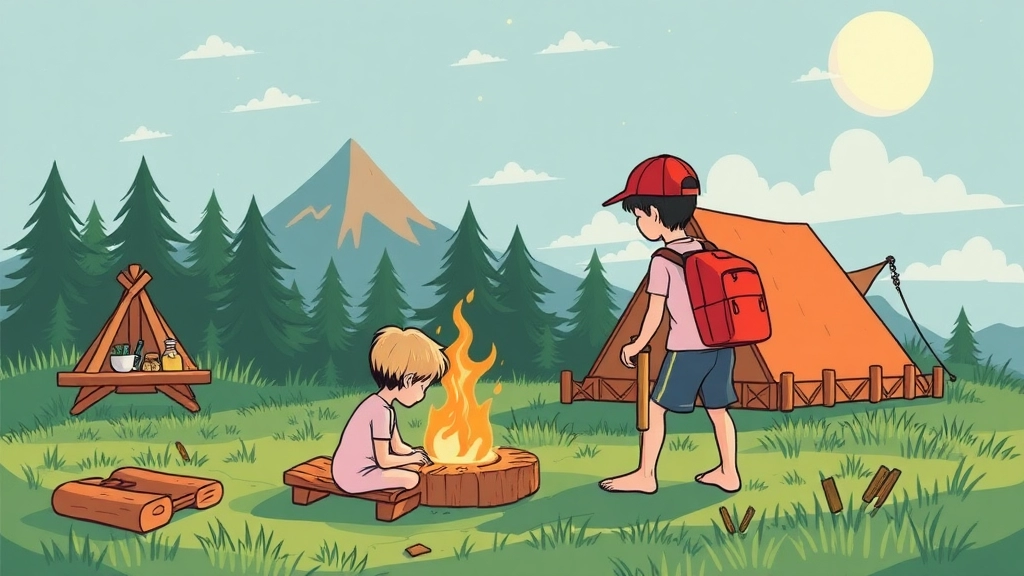Summer Camp Hacks
Summer camp is an exciting adventure, but packing and preparation can often feel overwhelming. That’s where these summer camp hacks come in handy. Whether you’re a parent getting your child ready or a camper gearing up for fun, these tips will make the process smoother and stress-free. From clever packing tricks to staying organized and comfortable, we’ve got you covered.
Packing Essentials
First up, let’s talk about packing essentials. Knowing what to bring and how to pack efficiently can save you a lot of headaches. Use packing cubes to maximize space in your luggage, and consider weather-proofing your gear to stay prepared for any conditions. Don’t forget hygiene hacks to keep fresh, and DIY solutions to enhance your camp comfort and entertainment. These practical tips will ensure you have a memorable and enjoyable camp experience.
Packing Essentials for a Stress-Free Camp Experience
Alright, let’s get straight to it. Packing for camp can feel like a daunting task, right? You’re probably wondering, “What if I forget something important?” or “How do I fit everything into my bag?” Trust me, I’ve been there. So, let’s break it down and make this as stress-free as possible.
The Must-Haves
First up, let’s talk about the absolute essentials you can’t afford to leave behind. These are the items that will make your camp experience smooth and enjoyable:
- Sleeping Gear: A quality sleeping bag is non-negotiable. Go for one that’s appropriate for the weather conditions. If you’re not sure, a three-season sleeping bag usually does the trick.
- Tent: If you’re not sharing, make sure your tent is easy to set up and sturdy enough to withstand unexpected weather changes.
- Clothing: Pack layers. Think base layers, mid-layers, and outer layers. This way, you can adapt to changing temperatures. Don’t forget a waterproof jacket.
- Footwear: A good pair of hiking boots is essential. Also, pack some comfortable shoes for lounging around camp.
- First Aid Kit: Accidents happen. A basic first aid kit with bandages, antiseptic wipes, and painkillers is a must.
- Cooking Supplies: If you’re cooking your own meals, bring a portable stove, fuel, and lightweight cookware. Don’t forget utensils and a lighter.
- Hydration: A sturdy water bottle or hydration bladder is crucial. Bring a water filter or purification tablets if you’re unsure about the water quality.
- Navigation Tools: A map and compass, and if you’re tech-savvy, a GPS device. Don’t rely solely on your phone’s GPS as batteries can die.
Extra Comfort Items
Now, let’s add a few items that can make your stay more comfortable and enjoyable:
- Camping Chair: Trust me, sitting on the ground gets old fast.
- Headlamp: Hands-free lighting is a game-changer. Bring extra batteries.
- Multi-tool: A Swiss Army knife or multi-tool can be incredibly handy.
- Insect Repellent: Avoid becoming a mosquito buffet.
- Sunscreen: Protect your skin, even if it’s cloudy.
- Snacks: High-energy snacks like trail mix, protein bars, and jerky can be lifesavers.
Packing Tips
Here are some quick tips to make packing a breeze:
- Roll Your Clothes: This saves space and reduces wrinkles.
- Use Packing Cubes: These help keep your gear organised and easy to find.
- Stuff Sacks: Use them for your sleeping bag and clothes to maximise space.
- Weight Distribution: Pack heavier items at the bottom of your backpack and closer to your back for better balance.
Personal Story
I remember my first camping trip; I packed everything but the kitchen sink. My backpack was so heavy, I felt like I was carrying a small elephant. I learned the hard way that less is often more. Focus on the essentials and you’ll have a much more enjoyable experience.
For more tips on making your camp experience memorable, check out our Top Summer Camp Challenges for Fun and Team Building and if you’re interested in some creative activities, don’t miss our Fun Summer Camp Crafts for Kids.
Creative Hacks to Maximize Space in Your Luggage
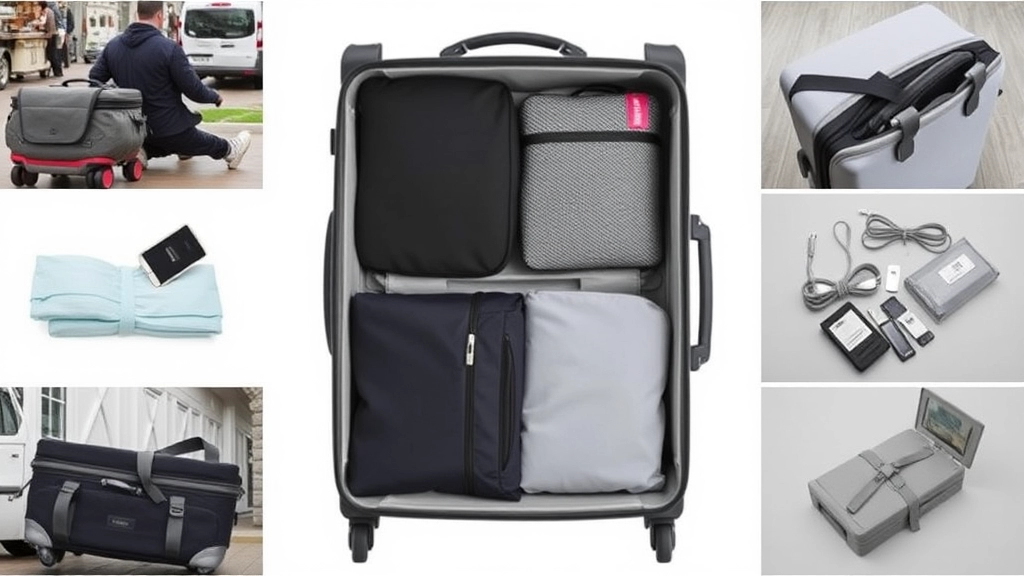
Ever felt like your luggage is a black hole?
You stuff it, zip it, and still, it feels like you’ve packed an elephant.
Let’s fix that.
Here’s how to maximise space in your luggage without losing your mind.
Roll, Don’t Fold
First things first.
Rolling your clothes saves more space than folding.
Trust me, it’s a game-changer.
- T-Shirts and Tops: Roll them up tight.
- Jeans and Trousers: Same deal.
- Socks and Underwear: Stuff them into shoes or corners.
Use Packing Cubes
These things are lifesavers.
They keep your stuff organised and compact.
- Small Cubes: For socks and undies.
- Medium Cubes: For t-shirts and shorts.
- Large Cubes: For jackets and trousers.
Compression Bags
Got bulky items?
Use compression bags.
They squeeze the air out, making everything flat as a pancake.
Perfect for jackets and sleeping bags.
Fill Every Nook and Cranny
No space left behind.
- Shoes: Stuff them with socks or small items.
- Corners: Fill them with rolled-up belts or scarves.
Multi-Use Items
Pack items that serve more than one purpose.
- Sarong: Use it as a towel, blanket, or even a dress.
- Zip-Off Trousers: Trousers and shorts in one.
Travel-Sized Toiletries
Full-sized bottles?
Forget it.
Go for travel-sized toiletries.
Or better yet, get refillable containers.
Wear the Bulky Stuff
If you’ve got heavy boots or a thick jacket, wear them while travelling.
Saves space and keeps you warm during the journey.
Digital Over Physical
Books and guides?
Go digital.
Use an e-reader or your phone.
Layering
Instead of packing thick jumpers, pack layers.
They take up less space and keep you just as warm.
Personal Item Hack
Most airlines allow a personal item.
Use a backpack or tote bag and pack it wisely.
- Electronics
- Snacks
- Important Documents
Real Talk
I once packed for a week-long trip in just a carry-on.
How?
By using every single one of these hacks.
It’s not magic, just smart packing.
So next time you’re staring at your overflowing suitcase, remember these tips.
Maximise space in your luggage and travel stress-free.
Weather-Proofing Your Camp Gear
Ever been caught in a downpour with all your stuff getting soaked? Yeah, not fun. Weather-proofing your camp gear is essential to keep your experience stress-free and enjoyable. Here’s how to make sure you’re prepared for whatever Mother Nature throws at you.
Why Bother with Weather-Proofing?
You might be wondering, “Is weather-proofing really necessary?” Absolutely, mate. Here’s why:
- Protection from the Elements: Rain, wind, and even morning dew can wreak havoc on your gear.
- Longevity of Equipment: Proper weather-proofing can extend the life of your camping gear.
- Comfort and Safety: Wet gear can lead to discomfort and even pose health risks like hypothermia.
Must-Have Weather-Proofing Gear
First things first, let’s talk about the essentials you’ll need:
- Waterproof Bags and Dry Sacks: Use these for clothes, electronics, and food. Trust me, you don’t want soggy sandwiches.
- Tent Footprint: A groundsheet that goes under your tent to keep moisture out.
- Seam Sealer: Apply this to your tent seams to prevent leaks.
- Rain Covers: For your backpack and other gear.
Pro Tips for Weather-Proofing
Here are some actionable tips to make sure you’re all set:
- Double Bagging: Use two layers of waterproof bags for critical items. Think of it as insurance.
- Silicone Spray: Apply it to your tent and backpack. It creates a waterproof barrier.
- Elevate Your Gear: Keep your stuff off the ground using tarps or hanging it from trees.
- Ventilation: Open up vents in your tent to reduce condensation. A dry tent is a happy tent.
- Duct Tape: Always have duct tape. It’s a quick fix for any unexpected leaks or tears.
Real-World Example
Last summer, my mate Tom and I went camping in the Lake District. We thought we were prepared until a sudden storm hit. His tent leaked, his clothes got soaked, and he was miserable. Meanwhile, I had my gear weather-proofed. My tent stayed dry, my clothes were snug in dry sacks, and I was as comfy as a bug in a rug. Lesson learned: weather-proofing is non-negotiable.
For more tips on preparing for summer adventures, check out our summer camp day schedule and explore some ultimate summer camp calendar templates to plan your trip efficiently.
Hygiene Hacks for Staying Fresh at Camp
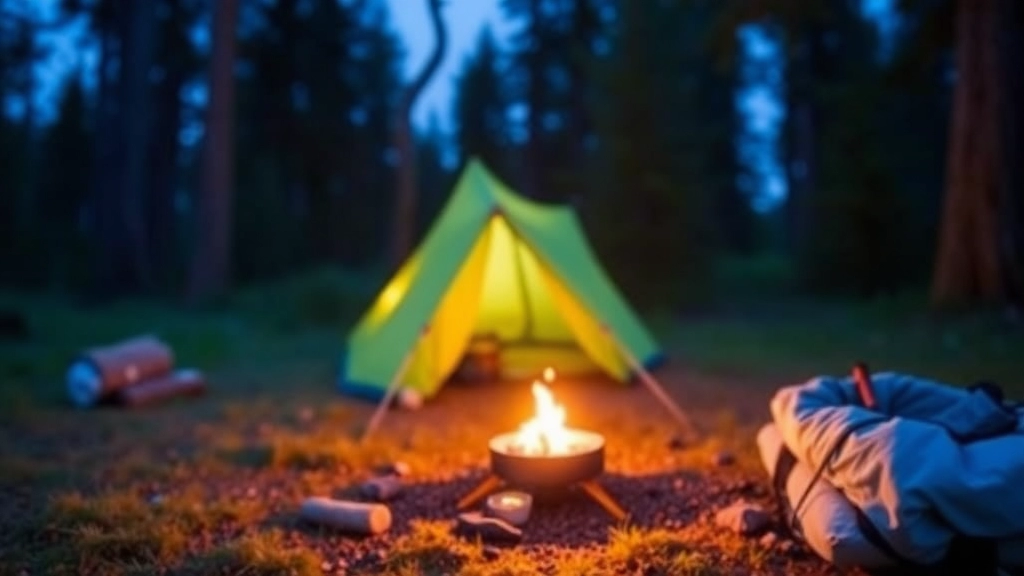
So, you’re off to camp, huh?
Excited, but also a bit worried about staying fresh?
Yeah, we’ve all been there.
Here’s the lowdown on how to keep it clean and cool at camp.
The Essentials
First things first, hygiene is key.
You don’t want to be that person everyone avoids because you smell like a wet dog.
Pack these essentials:
- Biodegradable soap: Good for you, good for nature.
- Dry shampoo: Keeps your hair fresh without water.
- Baby wipes: For those quick clean-ups.
- Hand sanitiser: Germs are everywhere, mate.
- Deodorant: Obvious, but often forgotten.
Water, Water, Everywhere
No showers?
No problem.
Here’s what you can do:
- Portable shower: A solar-heated bag that you can hang from a tree.
- Wet wipes: Use them like a mini-shower.
- River or lake dip: Nature’s bath, just make sure it’s safe.
Dental Care
Bad breath can ruin your day.
Here’s how to keep your mouth minty fresh:
- Toothbrush and toothpaste: Travel-sized, of course.
- Mouthwash: A quick swish and you’re good to go.
- Chewing gum: For a quick fix.
Dealing with Sweat
Sweat happens, especially when you’re active.
Stay fresh with these tips:
- Antiperspirant: Stops sweat before it starts.
- Change of clothes: Fresh clothes, fresh you.
- Talcum powder: Keeps you dry and smells good.
Keeping Your Feet Happy
Nothing worse than smelly feet.
Here’s how to avoid it:
- Change socks daily: Fresh socks, happy feet.
- Foot powder: Keeps feet dry and odour-free.
- Breathable shoes: Let your feet breathe.
Real Talk
I remember my first camp.
No showers, just a lake.
I thought I’d smell like fish all week.
But with some wet wipes and a good deodorant, I was golden.
DIY Solutions for Camp Comfort and Entertainment
Ever found yourself at camp, wishing you had a bit more comfort or something fun to do? Yeah, me too. Let’s dive into some DIY solutions that’ll make your camp experience not just bearable, but downright enjoyable. Trust me, with these hacks, you’ll be the camp hero everyone looks up to.
Comfort Hacks
1. DIY Pillow:
Forget that lumpy camp pillow. Grab a soft hoodie, stuff it with some clothes, and voila! Instant comfy pillow.
2. Makeshift Mattress:
Those thin camp mats can be brutal. Layer a couple of thick blankets or even a yoga mat underneath. It’s a game-changer for a good night’s sleep.
3. Camp Chair Upgrade:
Sitting on a flimsy camp stool? Not anymore. Use a sturdy crate, flip it upside down, and pad it with a folded blanket. It’s like bringing your favourite chair from home.
Entertainment Hacks
1. Campfire Stories with a Twist:
Sure, everyone loves a good ghost story. But why not spice it up? Create a story jar with prompts written on slips of paper. Each person picks one and has to weave it into their tale. It keeps everyone on their toes and laughing.
2. DIY Board Games:
Forget lugging a heavy board game. Use a piece of cardboard and a marker to create a simple board game. Use pebbles or bottle caps as game pieces. It’s lightweight and just as fun.
3. Nature Scavenger Hunt:
Make a list of items to find around the campsite. First one to check off all items gets a prize. It’s a great way to get everyone exploring and interacting with the environment.
Personal Stories and Examples
I remember one camp where we were all bored out of our minds after the sun went down. We ended up making a makeshift projector using a phone, a magnifying glass, and a cardboard box. We projected a movie onto a white tent wall. It was like our own little outdoor cinema, and it became the highlight of the trip.
Another time, my mate Tom brought along a simple deck of cards. We ended up playing a game called “Mafia” around the campfire. It was hilarious watching everyone try to bluff their way through the game. Sometimes, the simplest things bring the most joy.
For more ideas on how to make your camp experience memorable, check out our summer camp projects and if you’re planning to join a summer camp, don’t miss our summer camping packing list to ensure you have all the essentials.
Safety and Organization Tips Every Camper Should Know
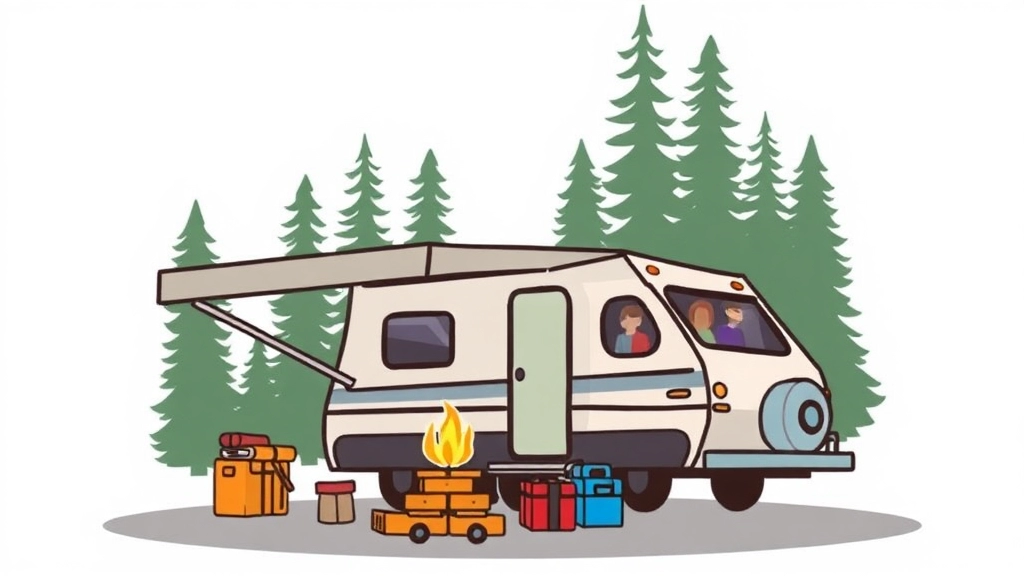
Alright, let’s get real.
Ever worried about getting lost in the woods or misplacing your gear?
Yeah, me too.
Safety and organization at camp are crucial. Here’s how to nail it.
Safety First, Always
1. Know Your Surroundings:
- Map it out: Always have a map of the campsite.
- Landmarks: Familiarise yourself with nearby landmarks.
- Buddy System: Never wander off alone. Always have a mate.
2. Emergency Kit Essentials:
- First Aid Kit: Include bandages, antiseptic wipes, and pain relievers.
- Whistle: For signalling in case you get lost.
- Torch: A reliable torch with extra batteries.
3. Fire Safety:
- Fire Pit: Use designated fire pits.
- Water Source: Always have water nearby to douse flames.
- Fire Extinguisher: Know where it is and how to use it.
Stay Organised, Stay Sane
1. Label Everything:
- Name Tags: Label your gear with your name.
- Colour Coding: Use different colours for different types of gear.
2. Use a Packing List:
- Checklist: Make a detailed list of everything you need.
- Tick Off: Check items off as you pack.
3. Storage Solutions:
- Ziplock Bags: Perfect for keeping small items organised.
- Plastic Bins: Use them for larger items and stack them neatly.
Real Talk: Stories from the Campfire
Once, I forgot to label my stuff.
Lost my favourite torch.
Had to borrow one all week.
Lesson learned: always label!
Another time, my mate didn’t bring a first aid kit.
Ended up with a nasty cut.
We had to improvise.
Not fun.
Pro Tips from Seasoned Campers
1. Keep Essentials Handy:
- Belt Pouch: Store your map, torch, and whistle.
- Easy Access: Keep them within arm’s reach.
2. Plan for the Worst:
- Backup Plan: Know what to do if things go south.
- Practice Drills: Run through emergency scenarios.
Fun and Practical Uses for Everyday Items at Camp
Ever wondered how to make the most out of everyday items while camping? You’re not alone. Many campers, especially newbies, worry about carrying too much or not having the right gear. Let’s dive into some creative and practical ways to repurpose common household items for a better camp experience.
Multi-Functional Duct Tape
Duct tape is the Swiss Army knife of camping gear. Seriously, if you don’t have it in your pack, you’re missing out. Here’s how it can save the day:
- Tent Repairs: Got a tear in your tent? No worries. A bit of duct tape can patch it up in no time.
- Blister Prevention: Wrap it around potential hot spots on your feet to prevent blisters.
- Emergency Belt: Forgot your belt? Use duct tape to keep your trousers up.
- Waterproofing: Seal small holes in your gear to keep the water out.
Versatile Plastic Bags
Plastic bags are incredibly useful and lightweight. They can serve a multitude of purposes:
- Waterproofing Electronics: Keep your phone and other gadgets dry by storing them in plastic bags.
- Organisation: Use different bags to separate your clothes, food, and toiletries.
- Trash Bags: Always have a few on hand to keep your campsite clean.
Handy Binder Clips
You might think binder clips are just for the office, but they’re a camper’s secret weapon:
- Hanging Items: Clip them onto your tent or a tree branch to hang lanterns, clothes, or even a makeshift shower.
- Sealing Food Bags: Keep your snacks fresh by clipping the bags shut.
- Organising Cords: Keep your charging cables and ropes untangled.
Innovative Pool Noodles
Pool noodles aren’t just for the pool. They can be quite handy around the campsite:
- Tent Padding: Cut them to size and place under your sleeping bag for extra comfort.
- Firewood Carrier: Slice one side open and use it to carry firewood without hurting your hands.
- Safety Bumpers: Place them around sharp edges or tent stakes to avoid injuries.
Trusty Aluminium Foil
Aluminium foil is a camper’s best friend. Here’s why:
- Cooking: Wrap your food in foil and toss it in the campfire for an easy meal.
- Reflector: Use it to reflect heat back into your tent or make a DIY lantern by wrapping it around a flashlight.
- Cleaning: Scrunch it up into a ball to scrub pots and pans.
Real Stories and Examples
When I first started camping, I didn’t realise how many everyday items could be so useful. On one trip, my tent zipper broke. Thankfully, I had duct tape, and it saved the day. Another time, I used binder clips to hang a tarp for extra shade when the sun was blazing. These little hacks can make a huge difference.
If you’re looking for more creative ideas to enhance your camping experience, check out our summer camp theme days for inspiration. Additionally, for those who enjoy a bit of history, our abandoned summer camps article offers a fascinating look into the past.
Clothing and Footwear Hacks for All Camp Activities
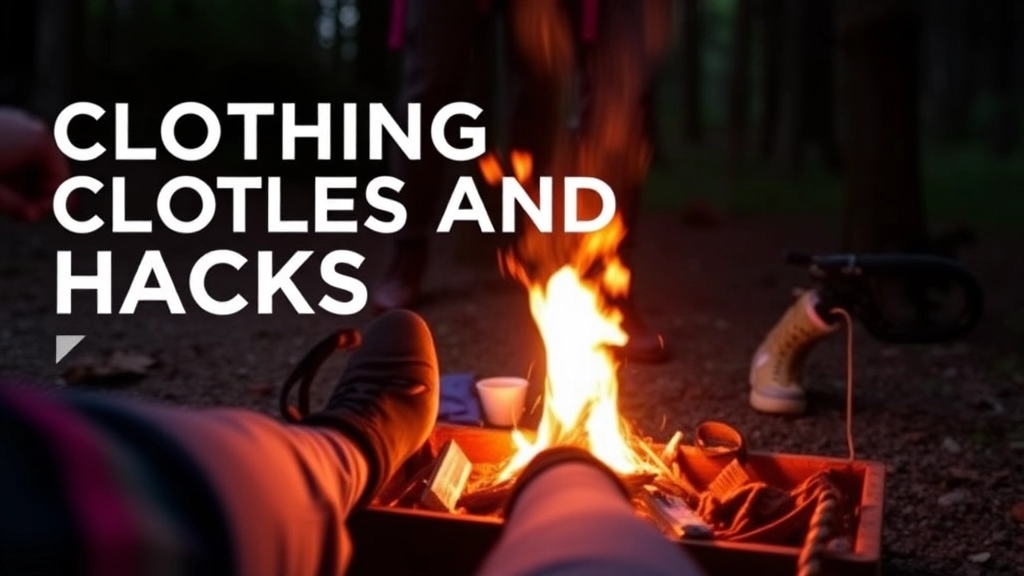
Ever wondered how to pack the right clothes for camp without lugging around a giant suitcase?
Yeah, me too.
Let’s dive into some killer hacks for your clothing and footwear that’ll make your camp experience a breeze.
Packing Smart: What to Bring?
Packing the right clothes can make or break your camp experience.
Here’s what I swear by:
- Layer Up: Camp weather can be unpredictable. Bring layers – think t-shirts, jumpers, and a waterproof jacket.
- Quick-Dry Fabrics: These are lifesavers. They’re light, dry fast, and keep you comfy.
- Multipurpose Gear: A scarf that doubles as a blanket or a sarong that can be a towel. Genius, right?
Footwear: The Right Shoes for Every Activity
Your feet will thank you for this.
- Hiking Boots: Essential for those rugged trails. Break them in before camp to avoid blisters.
- Water Shoes: Perfect for those river crossings or canoe trips.
- Flip-Flops: Easy to slip on for quick trips to the loo or shower.
Organising Your Gear
Keeping your clothes and shoes organised can save you so much hassle.
- Packing Cubes: These are game-changers. Separate your clothes by type or activity.
- Shoe Bags: Keep your dirty shoes away from clean clothes. Simple but effective.
Real Talk: Stories from the Campfire
One time, I forgot my hiking boots and had to trek in my trainers.
Bad idea.
My feet were soaked and blistered by the end of the day.
Lesson learned: always pack the right footwear.
Quick Tips for Staying Fresh
No one wants to be the smelly camper.
- Dry Shampoo: Keeps your hair looking fresh without a shower.
- Antibacterial Wipes: Great for a quick clean-up when you’re short on time.
Easy Ways to Keep in Touch with Home
Alright, let’s get real. One of the biggest worries when heading off to camp is staying connected with home. Whether it’s your first time away or you’re a seasoned camper, everyone feels that tug. So, how do you keep in touch without it becoming a hassle? Let’s dive into some easy, no-nonsense tips.
Why Staying Connected Matters
Ever felt that pang of homesickness? Or worried your family might be missing you? Keeping in touch with home isn’t just about updates; it’s about maintaining that emotional bond. So, let’s make sure you stay connected without any stress.
Simple and Effective Communication Methods
1. Phone Calls and Texts:
- Scheduled Calls: Set a specific time each day or week to call home. This creates a routine and something to look forward to.
- Text Updates: Quick texts can be a lifesaver. Share a funny moment or just a “Goodnight” message.
2. Snail Mail:
- Postcards and Letters: There’s something special about receiving a handwritten note. Pack some stamps and postcards before you leave.
- Weekly Letters: Make it a habit to write a letter every week. It’s a great way to reflect and share your experiences.
3. Email and Social Media:
- Email Check-ins: If you have access to a computer, a quick email can be a great way to stay in touch.
- Private Social Media Groups: Create a private group where you can share photos and updates with family and close friends.
Tech Tips for Staying Connected
4. Apps and Gadgets:
- Video Calls: Apps like Skype, Zoom, or FaceTime are perfect for seeing familiar faces. Just make sure you have a good internet connection.
- Messaging Apps: WhatsApp, Messenger, or Viber can be used for free texts and calls.
5. Power Solutions:
- Portable Chargers: Keep a power bank handy to ensure your devices are always charged.
- Solar Chargers: If you’re off-grid, a solar charger can be a game-changer.
Creative Ways to Stay in Touch
6. Camp Journals:
- Shared Journals: Start a journal that you and your family can pass back and forth. Write about your day, draw pictures, or include photos.
- Video Diaries: Record short videos of your day and send them when you get a chance.
7. Care Packages:
- Send and Receive: Arrange to send and receive care packages. Include little reminders of home, snacks, or fun camp-related items.
Real Stories from Campers
I remember my first camp experience. The highlight of my week was the scheduled call with my family. It was a simple routine, but it made all the difference. Another camper shared how they created a private Instagram account just for family updates. They posted photos and stories, and it felt like their family was right there with them.
Quick Tips for Staying Connected
- Set Expectations: Let your family know your camp schedule and when you’ll be able to communicate.
- Stay Organised: Keep all your communication tools (chargers, stamps, addresses) in one place.
- Be Present: While staying in touch is important, don’t let it take away from your camp experience. Balance is key.
Hacks for Handling Homesickness at Summer Camp
Feeling homesick at summer camp?
You’re not alone.
It’s a common worry, but there are ways to handle it.
Let’s dive into some practical hacks that can make your camp experience more enjoyable.
Stay Busy and Engaged
Keeping yourself occupied can really help.
Here’s how:
- Join Activities: Dive into as many camp activities as you can. The busier you are, the less time you’ll have to feel homesick.
- Make New Friends: Chat with your bunkmates. Share stories. You’ll find a lot in common and it’ll make camp feel more like home.
- Set Goals: Whether it’s mastering a new skill or completing a craft, having something to aim for keeps your mind focused.
Bring Comfort from Home
Little pieces of home can make a big difference.
Consider these:
- Photos: Pack a few photos of family and friends. Seeing their faces can be comforting.
- Favourite Items: Bring a small item that reminds you of home, like a favourite pillow or blanket.
- Letters: Have a stash of letters from loved ones to read when you’re feeling down.
Stay Connected
Staying in touch with home can ease the homesickness.
Here’s how:
- Write Letters: Regularly writing letters to family can be therapeutic. Plus, getting letters back is a real morale booster.
- Scheduled Calls: If the camp allows, set up a regular time to call home. Knowing you’ll speak to family soon can be reassuring.
Embrace the Camp Life
Sometimes, it’s about shifting your mindset.
Try these tips:
- Positive Thinking: Focus on the positives of camp. Think about the fun you’re having and the new experiences.
- Mindfulness: Practice being in the moment. Enjoy the nature around you and the activities you’re doing.
- Talk About It: Don’t bottle it up. If you’re feeling homesick, talk to a camp counsellor. They’re there to help.
Create a Routine
Having a routine can make camp life feel more structured and less overwhelming.
Consider:
- Morning Rituals: Start your day with a routine. It could be a quick stretch, a favourite song, or a chat with a mate.
- Evening Wind-Down: End your day with something relaxing. Maybe it’s reading a book or writing in a journal.
Make the Most of It
Remember, camp is a unique experience.
You’re there to make memories, learn new things, and have fun.
Homesickness is normal, but it doesn’t have to take over your camp experience.
Stay busy, stay connected, and embrace the adventure. For more tips on making the most of camp, check out our guide on creating lifetime memories at camp.
You’ve got this! And if you’re looking for more ways to stay engaged, explore some creative summer camp themes that can add even more fun to your experience.
FAQs on Summer Camp Hacks
How can I maximize space in my luggage?
To maximize space in your luggage, try rolling your clothes instead of folding them, use packing cubes, and compression bags. Fill every nook and cranny, pack multi-use items, and opt for travel-sized toiletries.
What are some essential hygiene items to bring to camp?
Essential hygiene items include biodegradable soap, dry shampoo, baby wipes, hand sanitizer, and deodorant. These will help you stay fresh even when showers are not available.
How can I stay clean without a shower at camp?
You can use a portable shower, wet wipes, or take a dip in a river or lake (if safe) to stay clean without a shower. Additionally, dry shampoo can help keep your hair fresh.
What should be included in an emergency kit for camping?
Include a first aid kit with bandages, antiseptic wipes, and pain relievers, a whistle for signaling, and a reliable torch with extra batteries in your emergency kit.
How can I keep my feet from getting smelly at camp?
Change your socks daily, use foot powder to keep your feet dry, and wear breathable shoes to avoid smelly feet at camp.
What are some tips for organizing my camping gear?
Label everything with name tags, use a packing list to ensure you have all essentials, and utilize storage solutions like ziplock bags and plastic bins to keep your gear organized.
What type of clothing should I pack for camp?
Pack layers to adapt to changing weather conditions, opt for quick-dry fabrics, and bring multipurpose gear like a scarf that doubles as a blanket or a sarong that can be used as a towel.
What footwear should I bring for different camp activities?
Bring hiking boots for rugged trails, water shoes for river crossings or canoe trips, and flip-flops for quick trips to the bathroom or shower.
How can I stay fresh at camp without frequent showers?
Use dry shampoo to keep your hair looking fresh and antibacterial wipes for quick clean-ups when you’re short on time.
What are some safety tips for camping?
Always have a map of the campsite, familiarize yourself with nearby landmarks, use the buddy system, and know the location of the fire extinguisher and water source for fire safety.
How can I make sure I don’t lose my gear at camp?
Label your gear with your name, use color coding for different types of gear, and keep essentials like your map, torch, and whistle in a belt pouch for easy access.
References
-
How to Pack a Suitcase: The Ultimate Guide
-
REI’s Backpacking Checklist
-
Essential Backpacking Gear

